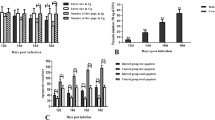Abstract
The placenta is a vitally important organ in the regulation of embryonic development. That is why extensive calcium deposition [also named as pathological placental calcification (PPC)] could have serious negative consequences for the adequate growth of embryos. The nature and mechanism of PPC development has not been defined as yet. In the present investigation, we have tested the hypothesis that the molecular basis of PPC development consists of nanobacteria-induced calcification in infected female placenta. Electron microscopy findings support this hypothesis. The initial stage of micro-calcification may originate from the external surface of individual nanobacteria-like particles found mainly in placental extracellular matrix, where initial calcium deposition occurs as a needle surface deposition or as an amorphous-like surface precipitate. Further calcific propagation in placenta takes place in the newly formed macro-cavities, which are characterized by low electron density, possibly reflecting its liquid content around calcium deposition. The micro-cavities contain free nanobacterial-like particles, which may relate to atypical Gram-negative bacteria but not to apoptotic bodies by morphological characters and DNA/RNA distribution. We hypothesize that the increased placental calcification might be caused, at least in part, by nanobacterial infection.
Similar content being viewed by others
References
Giachelli C M, Speer M Y, Li X, Rajachar R M and Yang H 2005 Regulation of vascular calcification. Roles of phosphate and osteopontin; Circulation Res. 96 717–722
Guller S and Lachappelle L 1999 The role of placental Fas ligand in maintaining immune privilege at maternal-fetal interfaces; Semin. Reprod. Endocrinol. 17 39–44
Kajander O E and Ciftcioglu N 1998 Nanobacteria: An alternative mechanism for mechanism for pathogenic intra-and extra-cellular calcification and stone formation; Proc. Natl. Acad. Sci. USA 95 8274–8279
Kasznica J M and Petcu E B 2003 Placental calcium pump: clinical-based evidence; Pediatric Pathol. Mol. Med. 22 223–227
Kim K M 1976 Calcification of matrix vesicles in human aortic valve and aortic media; Fed. Proc. 35 156–162
McDonagh S, Maidji E, Ma W, Chang H T, Fisher S and Pereira L 2004 Viral and bacterial pathogens at the maternal-fetal interface; J. Infect. Dis. 190 826–830
Miller V M, Rodgers G, Charlesworth J A, Kirkland B, Severson S R, Rasmussen T E, Yagubyan M, Rodgers J C, Cockerill F R and Folk R L, Rzewuska-Lech E, Kumar V, Farell-Baril G and Lieske J C 2004 Evidence of nanobacterial-like structures in calcified human arteries and cardiac valves; Am. J. Physiol. Heart Circ. Physiol. 287 H1115–H1124
Pitkin R M 1985 Calcium metabolism in pregnancy and the perinatal period. A review; Am. J. Obst. Gynecol. 151 99–109
Poggi S H, Bostrom K I, Demer L L, Skinner H C and Koos B J 2001 Placental calcification: A metastatic process?; Placenta 22 591–596
Sabbagh Y, Carpenter T O and Demay M B 2005 Hypophosphatemia leads to rickets by impairing caspase-mediated apoptosis of hypertrophic chondrocytes; Proc. Natl. Acad. Sci. USA 102 9631–9642
Sun Y, Wenger L, Brinckerhoff C E, Misra R P and Cheung H S 2002 Basic calcium phosphate crystals induce matrix metalloproteinase-1 though the RAS/mitogen-activated protein kinase/c-Fas/AP-1 and PEA-3 pathway — Involvement of transcription factor binding sites AP-1 and PEA-3; J. Biol. Chem. 277 1544–1552
Sun Y, Zeng X-R, Wenger L and Cheung H S 2003 Basic calcium phosphate crystals stimulate the endocytotic activity of cells — inhibition by anti-calcification agents. Biochem. Biophys. Res. Commun. 312 1053–1059
Vu T H, Shupley M J, Bergers G, Helms J A, Hanahan D, Shapiro S D, Senior R M and Werb Z 1998 MMP-9/Gelatinase is a key regulator of growth plate angiogenesis and apoptosis of hypertrophic chondrocytes; Cell 93 411–422
Zilanti M, Fernandez S, Azuega A, Jorgez J, Severi F M and Colosi E 1987 Ultrasound evaluation of the distal femoral ephiphyseal ossification center as a screening test for intrauterine growth retardation; Obstet. Gynecol. 70 361–364
Author information
Authors and Affiliations
Corresponding author
Rights and permissions
About this article
Cite this article
Agababov, R.M., Abashina, T.N., Suzina, N.E. et al. Link between the early calcium deposition in placenta and nanobacterial-like infection. J. Biosci. 32 (Suppl 2), 1163–1168 (2007). https://doi.org/10.1007/s12038-007-0118-9
Received:
Accepted:
Published:
Issue Date:
DOI: https://doi.org/10.1007/s12038-007-0118-9




